Table of Contents
- Best Alexa Skills for Seniors You Should Know Of - May 16, 2021
- Magic Ear Review: Does it Actually Work? - May 16, 2021
- GreatCall Touch 3 Review: What is it & is it a Good Option for Seniors? - September 3, 2019
The A to Z Guide to Finding the Best Cell Phones for Seniors
When it comes to seniors and cell phones, there’s a large discrepancy, despite popular depiction. Some seniors are active on social media and arguably more tech-savvy than their younger peers, while other seniors struggle to adapt to using cell phones for a variety of reasons many of them linked to physical changes.
But the best cell phones have the ability to guide seniors and keep them connected to the best technology and service possible. And sometimes all it takes is a simple A to Z Guide to make it approachable.
It’s not just us that are concerned about seniors adapting to, and finding the best cell phones possible.
At the Tunkhannock Adult Center based in Wyoming, helping seniors stay up to date with technology is one of the main initiatives centered on the goal of keeping older adults feeling connected and involved.
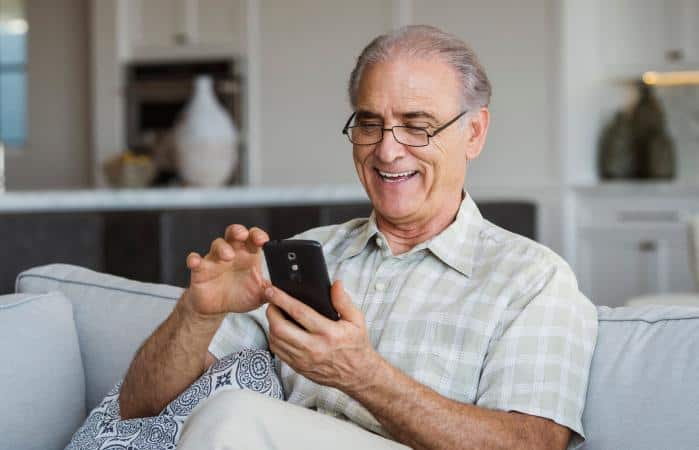
On a recent Friday, the center offered a crash course on the new cell phones they received courtesy of Garrette Howard and Ka-Meach Pringle of A Brand New Home Age Care.
Phone plans included unlimited data and WiFi–features that many were not used to, or for whatever reason had stayed away from. They also were learned the ins and outs of video chatting and tried WhatsApp.
But sometimes you need more than a crash course. While for some seniors, the technology gap is the primary concern, for others it’s physical changes. No matter the reason, one of the key ways to get and keep seniors connected is finding the best cell phones possible.
We’ll be taking you through and A to Z guide to finding the best senior cell phone so you know exactly what to look for.
Is it really that important to keep seniors connected with cell phone technology?
The way we communicate is changing rapidly–one only needs to look to landline phone vs cell phone use to confirm that. As of 2018, over half, or fifty-three percent of American households were completely wireless. Compare that to just three years earlier, where well over half– fifty-six percent of households–were still using landlines.
That isn’t to say using a landline is problematic, but it does show just how rapid technology changes.
Cell phones have undeniably become a way of American life: ninety-four percent of Americans own one, and the average person has it by their side sixteen hours a day and checks it one hundred and fifty times a day. Six million text messages are sent per day, according to data collected through Mobile Couch, which equates to well over seven hundred text messages per month per person.
Without access to a cell phone or the best one for them, seniors are missing out on the most common way people communicate.
Being able to stay in touch with cell phones links to a larger issue–keeping seniors engaged through staying updated with technology.
What are the benefits of staying technologically connected for seniors?
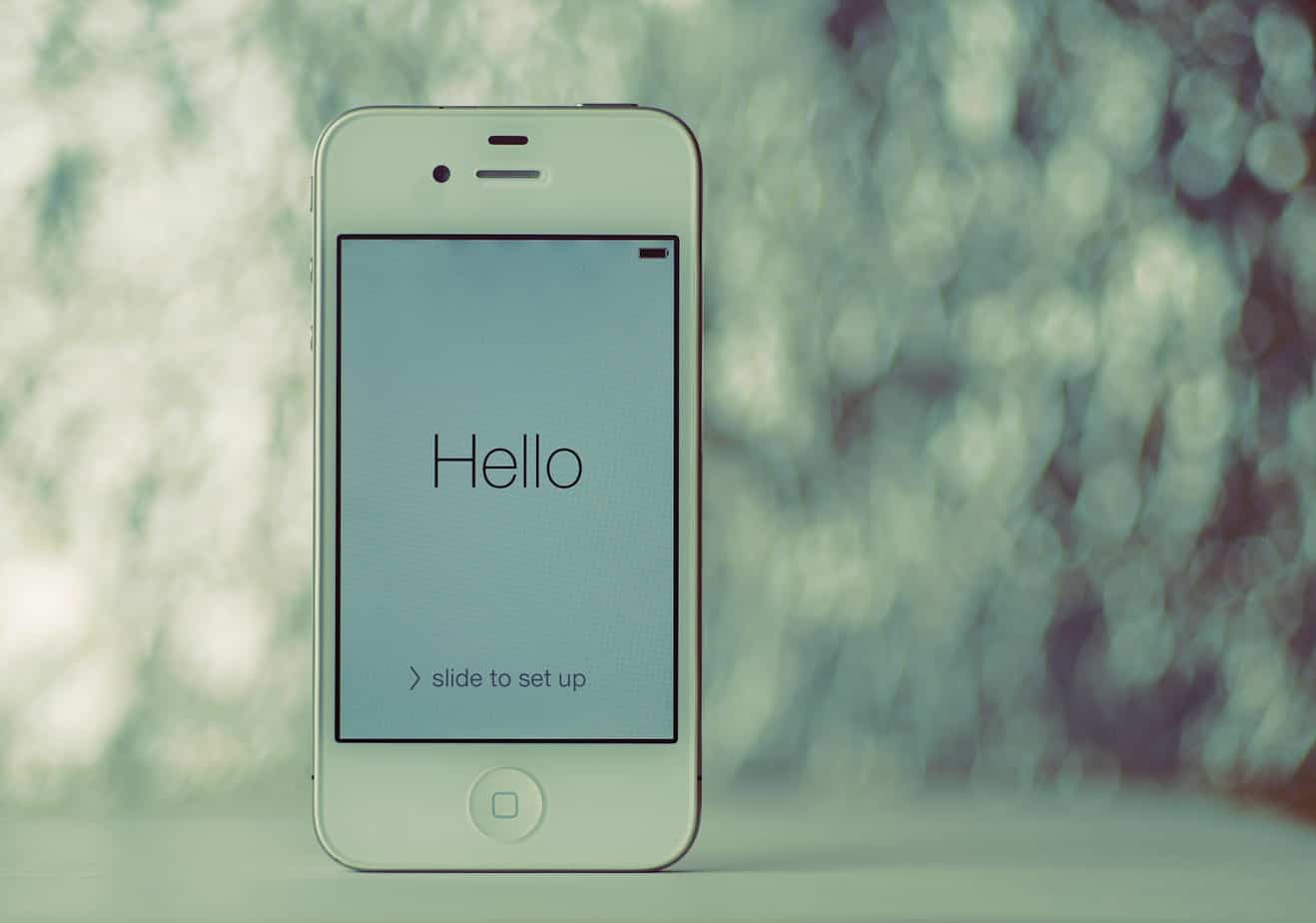
Staying technologically updated is not just a frivolous thing-staying up to date with technology can help seniors lead independent lives and stay healthy. Here are some main benefits of seniors keeping up to date with technology:
- Interpersonal connections: The best cell phones can help seniors stay in touch with friends and family. Cell phones make communication easier and more accessible; things such as video chatting and chatting wherever you are. Social interactions are key to physical and mental health–a longitudinal study of seven thousand men and women conducted in California found that people were three times were more likely to die if they had weak to nonexistent social ties–a result that held true regardless of age, gender, or ethnicity.
- More involved: Along the same lines, staying up to date with technology can help seniors more involved not only on an interpersonal level but also engaged in general. A smartphone is a way to connect to apps and web browsers, as well as to other ways of communicating. By staying on top of technology seniors can feel more interconnected with the rest of their world and involved in their own life.
- More informed. Staying on top of technology and cell phones, in general, can also help seniors feel more informed and even help them make decisions about their personal lives as well as health. Smartphones can help seniors access technology to research treatment options, housing, and more.
- Stay sharp: Cell phones also can connect seniors to apps that help them stay mentally sharp. Learning new skills in consistently doing exercises can help keep the brain sharp and even create new connections. Word games and crosswords can be completed through traditional paper, but cell phones can actually be more accessible, with the best offering zoom and large print options to allow them to work on new puzzles or catch up on the news whenever they want.
- Empowerment: A final if the loftier reason why it’s important for seniors to stay up to date with technology is that it creates a sense of empowerment. The best cell phones will help seniors feel that they can stay active in their own lives, in control of their decisions, and not left behind.
How do I go about finding a cell phone for me or a loved one? Are there certain features that are better than others for seniors?
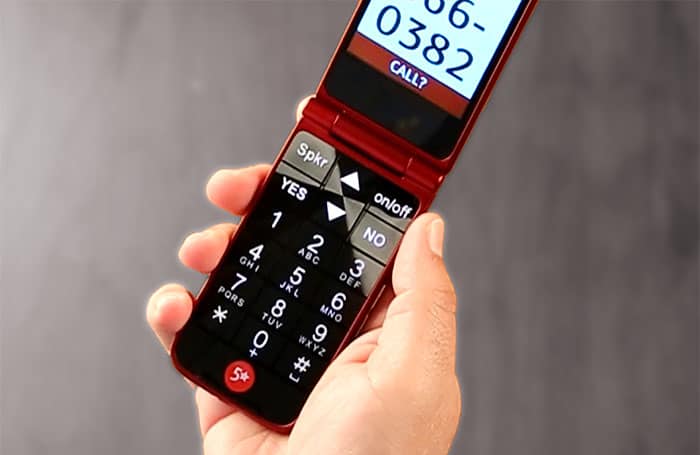
Finding the best cell phone for seniors isn’t all that different from picking out any cell phone: knowing what features to look at, as well as comparing in terms of prices and customer ratings are good places to start. Our quick A to Z Guide will help you get started on what kind of things you should be looking for.
Accessibility, Assistive Device Compatible.
-
- Accessibility is one of the first things you need to consider when searching for the best cell phones for seniors. As people, age, hearing, and eyesight can decline and sometimes dexterity as well. That can be a large barrier to using cell phones, which is why it’s important to look for cell phones that offer options for advanced hearing, special large print, and zoom features, as well as options for plug-in accessories. In fact, accessibility will be the entire theme of our guide. Accessibility in terms of cell phones for seniors is all about offering features that are either not normally available on regular commercial cell phones, or have been enhanced and are senior-friendly. The main goal of accessibility and this entire article is helping seniors find a cell phone that’s user-friendly.
- Assistive Device Compatible is a more general term–and we’ll go into more specifics–but basically, it indicates that the cell phone is compatible with one or more devices meant to make the phone more accessible. Hearing aids, amplified sound and other features like magnifiers are all helpful for helping seniors use their phones with more ease.
Backlit displays, Bright Colors, Battery Life, Bluetooth:
-
- Backlit displays are very helpful in reducing eye strain. They typically use LED lighting on a flat panel, as opposed to harsher fluorescent lighting. Fluorescent lights are actually the worst for eyesight, while LED is among the least harmful, in part because they produce no UV rays.
- Battery life may be important for anyone looking for the best cell phone possible. Long battery life will be more convenient and could be important in case of medical emergencies. In addition, lithium batteries, which are used in almost all cell phones now, are the best way to go and can be more resilient. Look also for phones for energy-saving features. If battery life is especially important to you, you may want to opt for a mid-range as opposed to a high range phone in terms of display.
- Bright colours on the outside of the phone make it easier to find a lost phone, while a screen with bright colors makes it easier to see in all forms of lighting and distinguish different icons.
- Bluetooth may seem like a quixotic feature to seek out in a senior phone, but it’s another hand free feature that can make use easier, syncing to cars and speaker for easier use, which also means less time staring at a screen. It’s also a safer option than answering a phone the traditional way while someone is driving.
Cost, Calendar Features, Contract, Color Scheme.
When looking at cost, think of overall value. Lower end smartphones are still normally over one hundred dollars; some of the newest and most popular cell phone models are over one thousand dollars. But that doesn’t mean you need to spend quite that much. First, look for what features are most important to you and then look for a price that makes sense. Keep in mind for some accessibility features you may have to pay a little more–but some free to low-cost apps also have a lot to offer.
-
- Calendar features are on most phones but look for one that is easy to use, easy to schedule events and send reminders. Alarms and notifications can help remind one of doctors’ and other important appointments. Look for a system that you can learn easily, but also ones that offer additional features, like syncing to your email or sending reminders a day for an hour before the event.
- Contracts are another thing to be concerned about, especially with cell phones specifically marketed towards seniors. Phones like the Jitterbug Smart 2 offer no contracts or cancellation fees, meaning that no one will be locked in with a phone they are not satisfied with. You should be free to cancel or go to a different plan at any time. Prepaid plans are also more simple to handle in terms of billing and maybe more fuss-free than other options.
- Colours are also important: we’ve already mentioned that bright colors are helpful, but even the hue of those colors can make a difference. Shy away from bright yellow, which tends to cause the greatest eye strain, and instead consider either a softer tint or displays, cases and exteriors with colors in the blue family.

Display
Here’s where you want to get picky. Certain display features and types are especially important for seniors. Even if your vision is still nearly as good as when you were younger, eye strain is more common in seniors. Opt for larger screens because small screens can cause eyestrain. And contrary to popular belief smartphones with blue screens are actually more detrimental and have been linked to macular degeneration as well as damage to the retina. Go with a large, and traditional display and take frequent breaks every half hour to an hour to avoid more eye strain.
Easy to use, Entertainment, Ear Cushions.
Make sure that the learning curve isn’t too steep. You might want to start with a smartphone that has a number of great features–but not everything. Ask a consultant or shop for a phone marketed towards the less tech-savvy, or look for something that includes easy to use basic features with optional add ons. Also important? A phone that is easy to turn on and off without applying too much pressure.
-
- Entertainment is less important but don’t go for a phone so basic it doesn’t have memory for word game apps or anything else that might make the experience more enjoyable. News and word apps both are ways to stay connected and stay sharp.
- Ear Cushions are a helpful feature if the cell phone is hearing aid compatible. This accessory may not come with the phone, but it’s a must for making use more comfortable.
Flashlight, Flip Phone, Front Facing Speaker.
-
- The flashlight is a feature is a pretty basic component, but it’s one to look for–it can be handy in the case of power outages or even night trips to the restroom and reduce the risk of injury.
- Flip Phones may feel outdated to some, but for seniors with reduced dexterity, a smartphone screen can be a handle. For seniors who don’t need to latest and greatest technology, flip phones can also be easier to learn how to use.
- Front Facing Speaker makes it easier to hear and is something many people may not think to look for.
Grabbable menus, GPS.
Can be easier to navigate for some. A ‘grabbable’ menu allows you to open functions in different tabs, move icons, and is more interactive than a traditional menu. This may not be the best for seniors who have trouble with dexterity, but it is helpful for seniors who need their smartphone to be customizable and include easy to find icons and features. The best menus allow you to change and customize and easily delete icons you don’t want or won’t use cutting back on used space and time to find what you want–especially if you don’t plan on using all features and apps. A GPS is an excellent feature for someone living independently so loved ones know if they have been out for a long period of time and easily locate in case of an emergency.
Hearing aid compatible
It’s another important feature for many seniors. What kind of features you need does depend on the level of hearing loss. With more moderate or slight hearing loss, search for a phone that mentions its M Rating. The M rating is on a scale from one to four; four being the most compatible. For more severe hearing loss, look for a T Rating, which is also on a scale from one to four. The T rating refers to telecoil hearing aid compatibility.
Internet
Internet is a feature on smartphones in general but asks about ease of use, if there are features like favorite pages and bookmarks, and the speed of the connection. You might also want to see if there’s an easy to access app store linked to the phone. Also asks about data plans and hotspots, should you be in an area without reception.
Keyboards
Are very important to look at as an option vs touch screen. What is better for you depends on a number of factors. Raised buttons with distinct lettering are great for those with vision problems. White letters, for instance, against a black background, with raised buttons, are your best option. Large buttons are also helpful, and both may be preferable to a touchscreen for some seniors.
Light, Live Operators
-
- Light can play a role in how easy it is to see the screen and can even impact your sleep. As we’ve already touched upon, you’re better off going with a smartphone that avoids blue lights; instead look for a smartphone that has an easy to adjust brightness, energy-saving feature, and a flashlight accessory. Brighter is not always better: oft for a softer light that is less harsh on the eyes.
- Live Operators are available with a limited number of phone plans, normally to help with technical issues but also other concerns with using the phone. Some plans will go beyond the typical customer service route; ask if there are any plans that offer a similar senior-friendly option.
Medical alerts
Medical alerts and features can often be found through free apps, but now some smartphones come with some excellent features upon purchase, such as an emergency call button, heart rate tracker, and direct line to urgent care.
Notepads
Notepads are fairly common features on most mobile phones but look for one with generous screen size and easy to use tools. A notepad is helpful for remembering and organizing lists and is less daunting than more advanced apps.
Optical zoom
Optical zoom is not a terribly common feature yet but is offered on some higher-end smartphones. While usually prized as a photography tool, it’s also helpful for those with reduced eyesight who want to take pictures, because it is able to enhance and improve quality of zoom to a degree other zoom options cannot.
Pen Enabled
Pen Enabled Smartphones allow you to use a touch screen more easily and can smooth the process from a traditional keyboard. They are also helpful for those with less dexterity and make the phone itself more friendly to use.
Quality of Service
Should be a concern of course with any smartphone purchase. Check coverage, data, and other factors. You, of course, should always consult customer ratings as well.
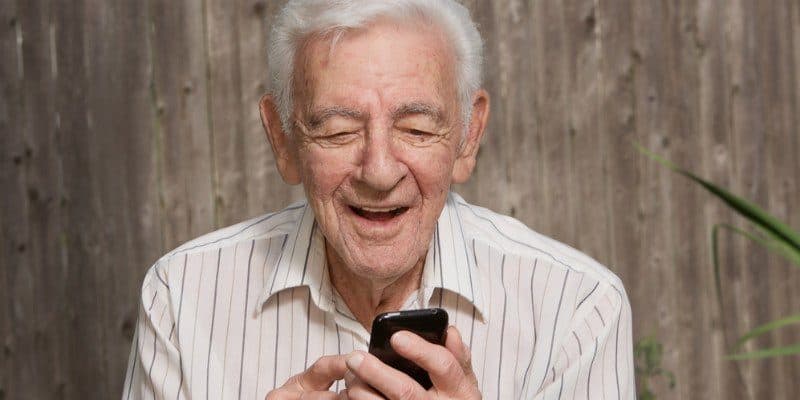
Ratings, Reduced Cost Plans, Ringtones.
-
- Ratings are a smart thing to check for any cell phone purchase, but especially for seniors. Better Business Bureau and Trust Pilot are some great sites to look at. Don’t just look at overall ratings; make sure you understand why the cell phones were rated the way they were, and check for reviews regarding both the cell phone itself and the service.
- Reduced Cost Plans are available with certain providers specifically for seniors. When in doubt, always ask if a discount is possible. Even if a plan doesn’t initially offer a reduced rate, you can comparison shop and see if they’d be willing to offer a rate competitive with their competitors.
- Ringtones are available for the hearing impaired, but you’ll have to purchase it separately from an app store. Luckily, there are options both on the iTunes Store and Google Play.
Check here some Mobile Service Providers comparisons and reviews here:
- TracFone vs Verizon
- Tracfone vs Cricket Compared
- Net10 vs Tracfone
- The Best Tracfone for Seniors On The Market!
Screen Size, Senior Plans, Speech to Text, Speakerphone.
-
- Senior Plans are more or less reduced plans that may also have reduced features. If you want to have a no-frills plan but still reliable service, ask your provider if there’s a cell phone that comes with a more limited senior plan that’s not only more affordable but also easier to learn.
- Screen Size is also really important: small screen sizes are especially difficult for those already suffering from, or at risk for eye strain, A 5.5-inch screen is a nice size to consider; large screens will make it easier to use the phone and can reduce fatigue.
- The speakerphone is a normal feature but make sure the quality is high and easy to adjust. Feedback is the most common issue with speakerphones but sometimes has something also to do with network connectivity. For a crisp sound, normally you want to go at least midrange in price.
- Speech to Text is an excellent option for anyone who is hard of seeing, has trouble handling the phone, or even is simply not used to using a smartphone. Look for a smartphone that offers a speech to text and asks about other hands-off options.
Touchscreens
Are a bit more challenging–make them more accessible with features we’ve already mentioned, including larger screen sizes, zoom options, and pen-enabled. You also want to look for smartphones that come with personal assistance, like A.I. Siri, where you can speak commands if you don’t have your hands free or it’s otherwise difficult to use the screen. And as we mentioned, considered a flip phone if a touchscreen doesn’t seem like the best option.
Urgent care, User Interface.
Urgent care can be accessed through some built-in apps for smartphones, such as Medical Guardian, Mobile Help Smart, and even fall detection software. User interfaces are a matter of personal preference–think about if a less busy menu or certain icons make more sense.
Visually Impaired individuals
Visually Impaired individuals have some options when it comes to cell phones you might not be aware of, including screen readers, voice control, and magnifiers. There are even braille keyboards. Some of these may need to be special ordered.
Water Resistant, World Roaming.
-
- Water Resistant is a good feature to have, especially because water accidents can happen and it’s a good idea to have a cell phone handy, especially without an emergency alert system, or likely in addition to.
- World Roaming is definitely not a must for all, but it’s a feature to consider for seniors who enjoy traveling. World roaming ensures reception for different parts of the world.
So what are the best cell phones for seniors?
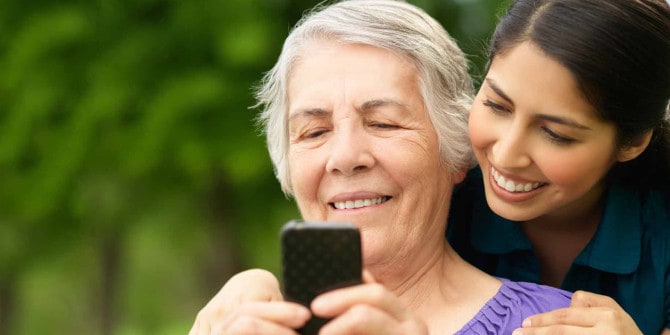
With all of these factors considered, the best cell phones for seniors are those that have the features you need–making sure that you keep an eye on key needs over price point and that the cell phone is both as accessible and user-friendly as possible. Here are just a few to consider:
- Jitterbug by GreatCall has both flip and smartphone options, with features like voice dialing, flashlights, magnifiers, and emergency alert buttons.
- Blu Joy by Blu is a slightly older model but offers great features like instant access to emergency services, including police and fire departments, but also includes a reasonable sized display and video and data plans.
- Snapfon ezTWO Senior Unlocked GSM Cell Phone: This cell phone is hearing aid compatible, includes an SOS button, and there’s no risk of accidental dialing due to a lock feature.
- Nokia 3310: This model is senior-friendly in so many ways, and it bright and sleek at the same time. The brightly hued shell with large buttons includes a polarized screen for easier reading under sunlight. The simple design and easy to navigate buttons also make it a great pick for seniors.
- PowerTel M9500: Described as a ‘comfort’ smartphone, the PowerTel is hearing aid compatible, has an easy to use design and speakerphones and ring tones that go as loud as ninety decibels. There’s also a call-in function, which allows family members to call in or talk with relatives with a simple push of a special “burst” button.
Further read:
